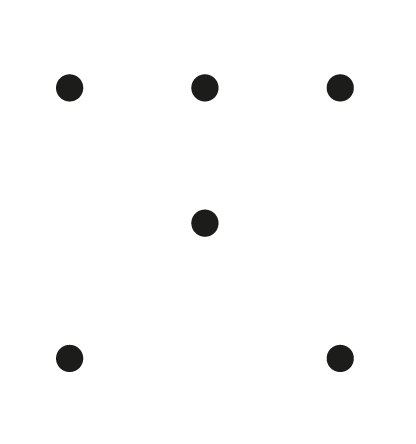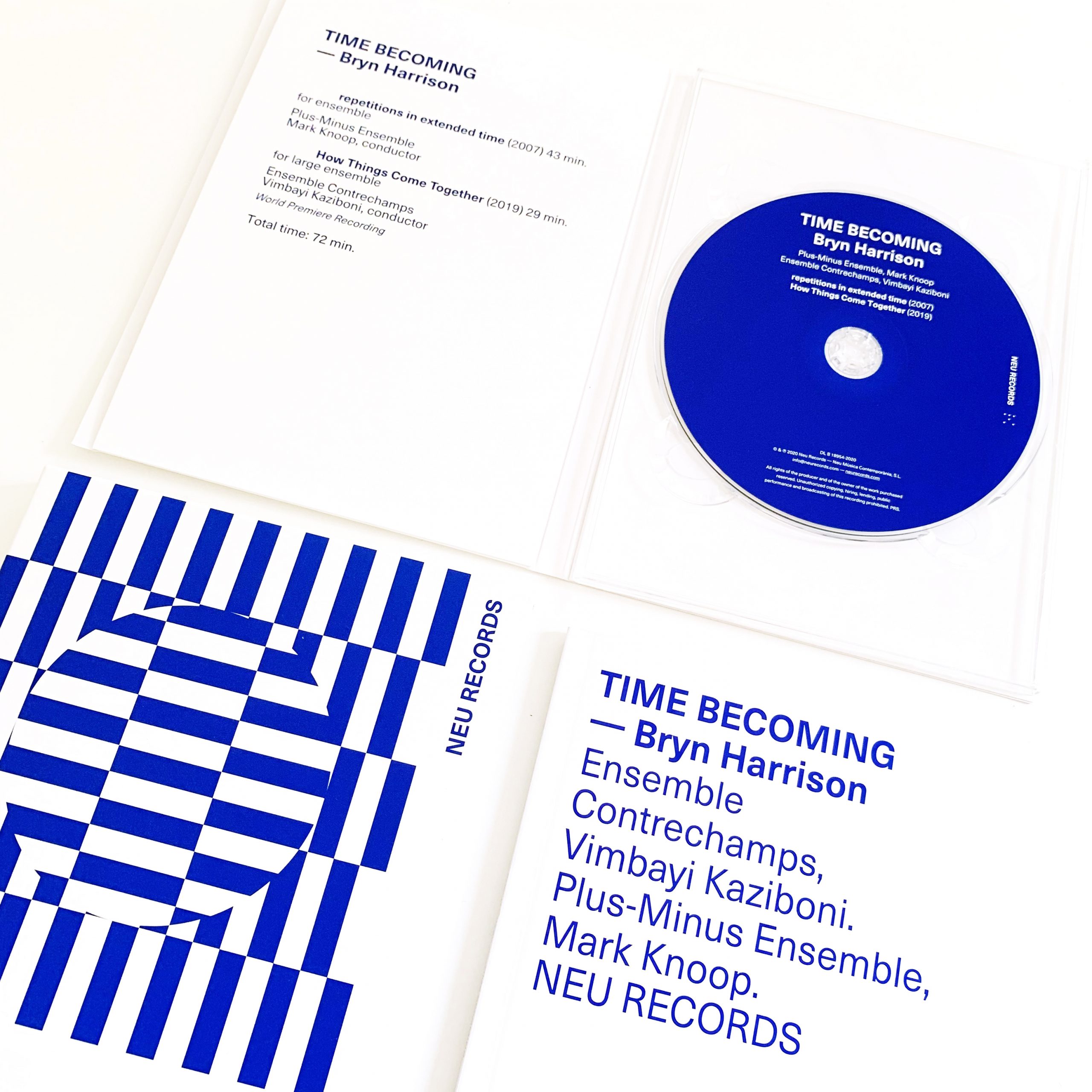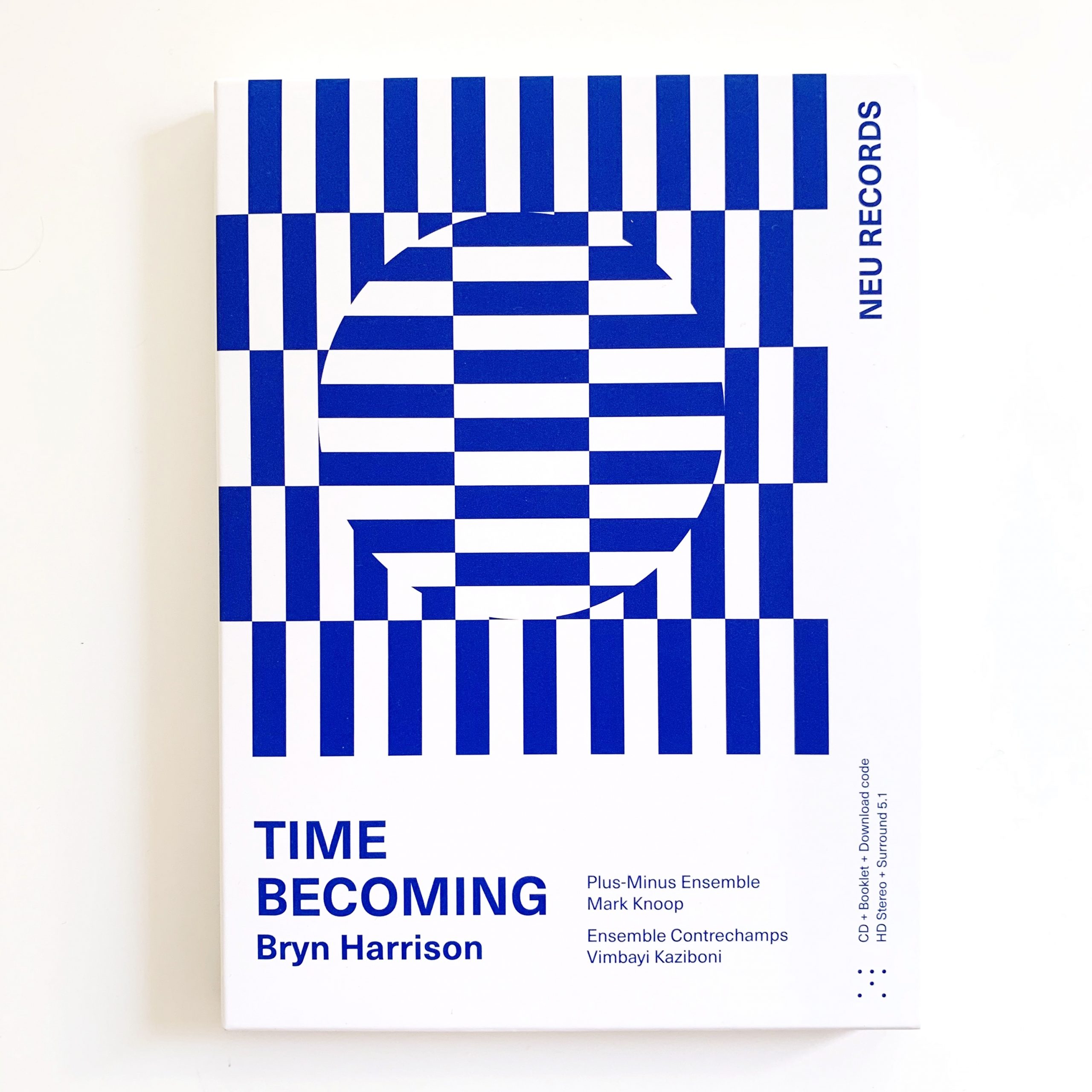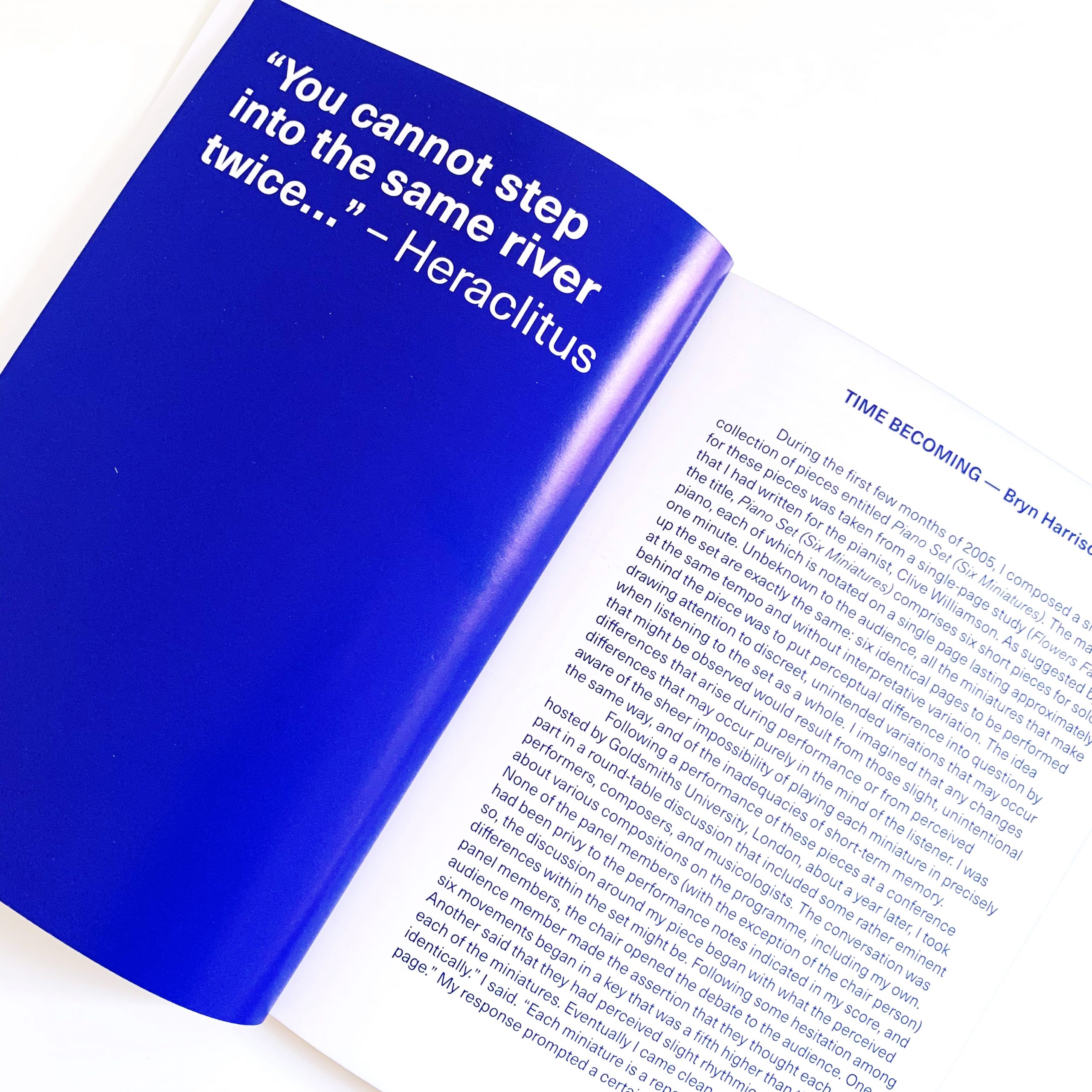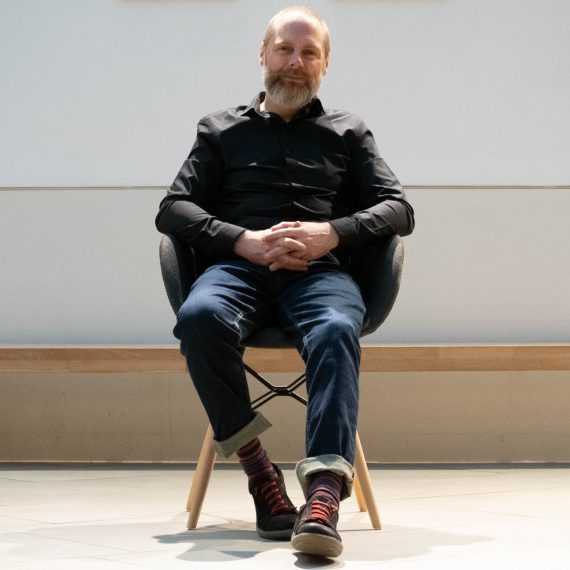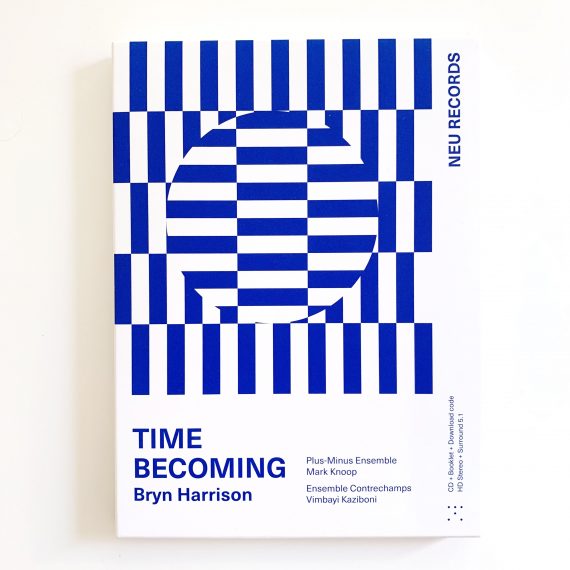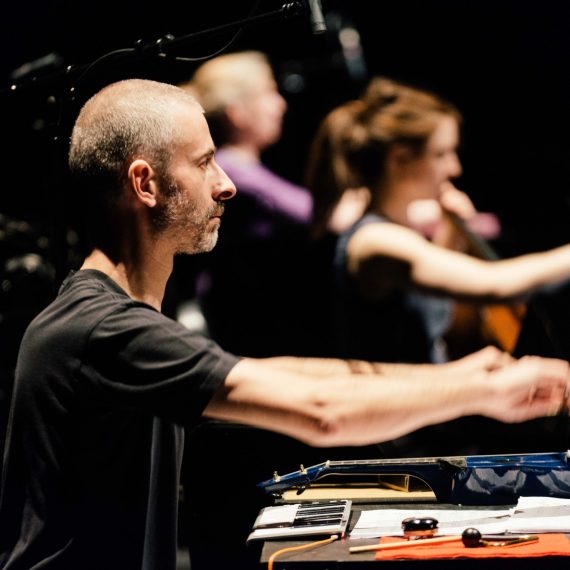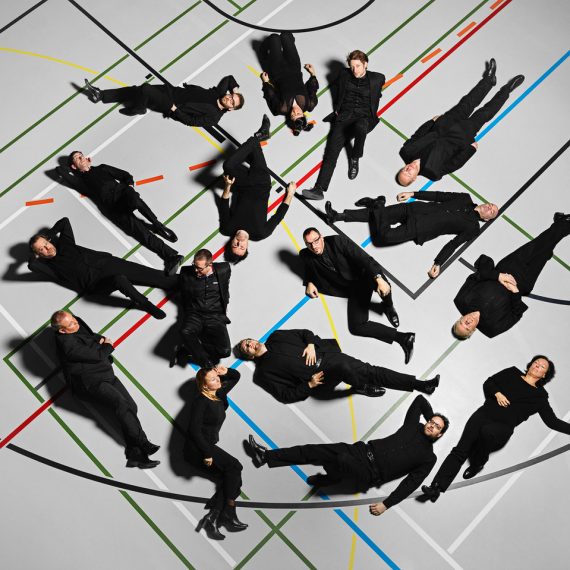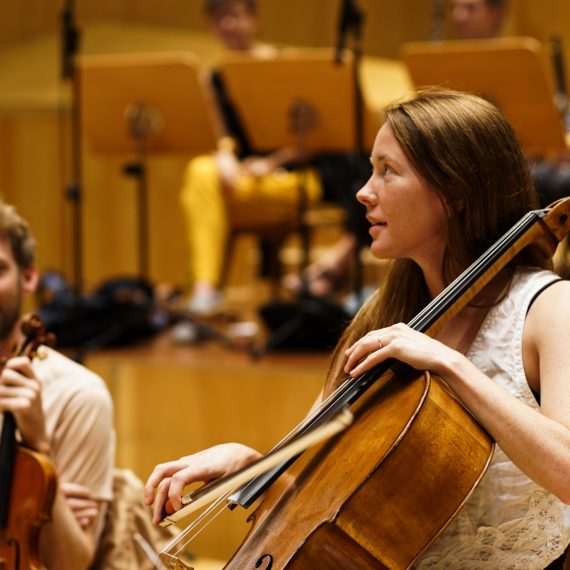TIME BECOMING
Bryn Harrison
repetitions in extended time (2007)
for ensemble — 43 min.
full score (pdf)
Plus-Minus Ensemble
Mark Knoop, conductor
How Things Come Together (2019)
for large ensemble — 25 min.
full score (pdf)
Ensemble Contrechamps
Vimbayi Kaziboni, conductor
Total time: 72 min.
Recorded in 3D format for sound installations (5.4.1), surround sound (5.1) and stereo (2.0)
World Premiere Recording
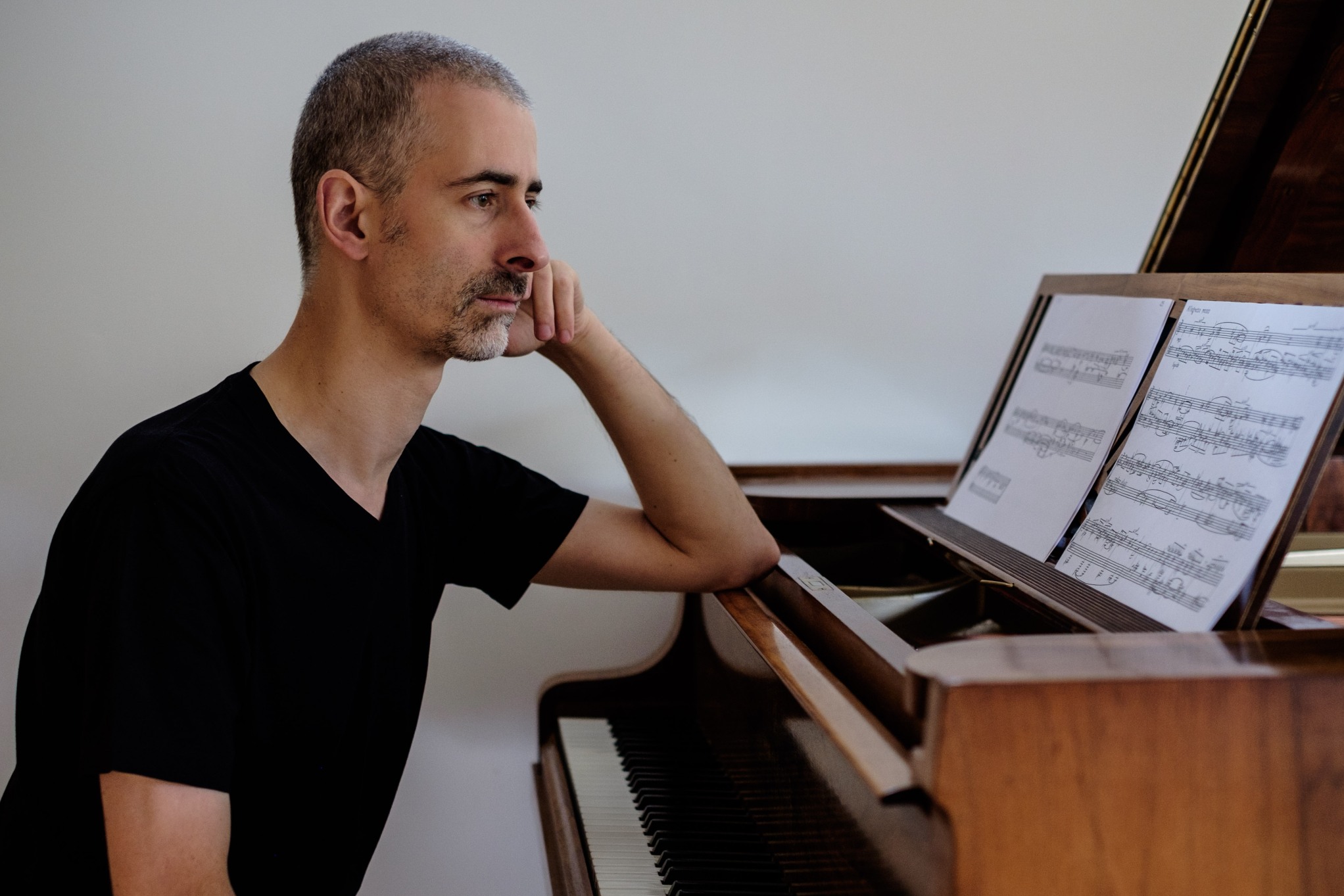
Mark Knoop © Dimitri Djuric
BUY ALBUM
CD + Booklet — HD Digital format included — 21,90€
HD Digital — Stereo and Surround 5.1, 24bit 96kHz — 14€
Digital — Stereo, 16bit 48kHz — 10€
More info about formats here
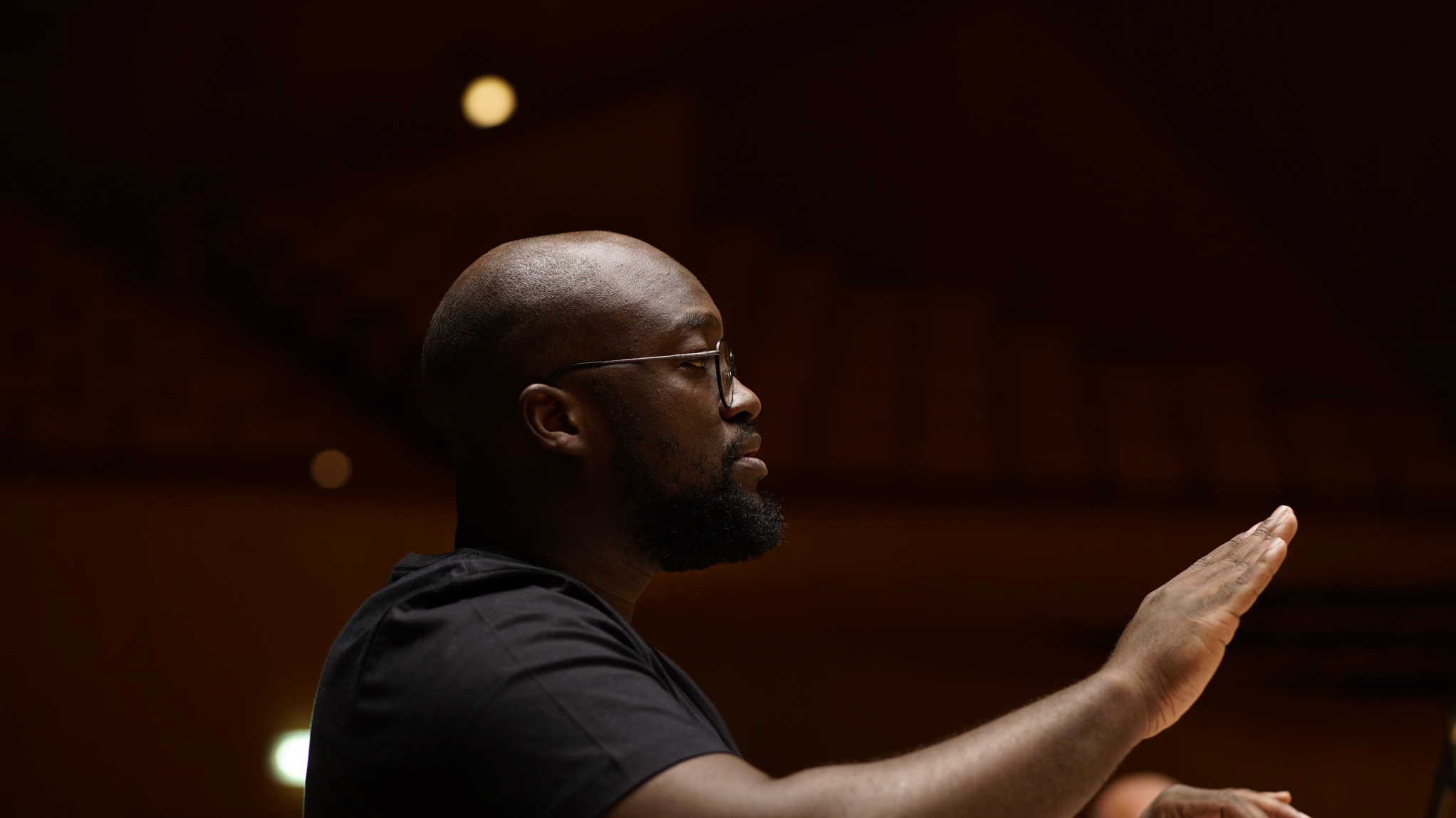
Vimbayi Kaziboni
“You cannot step into the same river twice…” — Heraclitus
During the first few months of 2005, I composed a short collection of pieces entitled Piano Set (Six Miniatures). The material for these pieces was taken from a single-page study (Flowers Fall) that I had written for the pianist, Clive Williamson. As suggested by the title, Piano Set (Six Miniatures) comprises six short pieces for solo piano, each of which is notated on a single page lasting approximately one minute. Unbeknown to the audience, all the miniatures that make up the set are exactly the same: six identical pages to be performed at the same tempo and without interpretative variation. The idea behind the piece was to put perceptual differences into question by drawing attention to discreet, unintended variations that may occur when listening to the set as a whole. I imagined that any changes that might be observed would result from those slight, unintentional differences that arise during performance or from perceived differences that may occur purely in the mind of the listener. I was aware of the sheer impossibility of playing each miniature in precisely the same way, and of the inadequacies of short-term memory.
Following a performance of these pieces at a conference hosted by Goldsmiths University, London, about a year later, I took part in a round-table discussion that included some rather eminent performers, composers, and musicologists. The conversation was about various compositions on the programme, including my own. None of the panel members (with the exception of the chair person) had been privy to the performance notes indicated in my score, and so, the discussion around my piece began with what the perceived differences within the set might be. Following some hesitation among panel members, the chair opened the debate to the audience. One audience member made the assertion that they thought each of the six movements began in a key that was a fifth higher than the last. Another said that they had perceived slight rhythmic differences in each of the miniatures. Eventually I came clean… “All six are notated identically.” I said. “Each miniature is a repeat reading of the same page.” My response prompted a certain level of surprise amongst the audience, a few of whom felt that some kind of trickery was at play. I tried to explain further that my intention, of course, was never to deceive the listener, but to question our notions of sameness and difference. And yet, each person who spoke out was right to think that the miniatures were different. How could they possibly be the same? Following that performance, I reached the conclusion that our perception of musical events is highly subjective, and that we listen to music in simpler ways than we may expect. I also came to the realisation that auditory memory is a very slippery thing.
Some months later, while grappling with Deleuze’s seminal text, Difference and Repetition, I came across David Hume’s often-quoted dictum that “repetition changes nothing in the object repeated, but does change something in the mind which contemplates it” (Deleuze, 2004). This quote made a big impact upon my thinking; it struck a chord with me in terms of what I was trying to explore in Piano Set (Six Miniatures) and other pieces from this period. As with Heraclitus’ famous statement that prefaces these liner notes, what Hume reminds us is that to experience something again is to experience change, since you cannot have the same experience twice. In other words, a direct repetition assumes a different identity to that which precedes it simply by being a repetition of that thing. A second repetition takes on a different identity to the first and so on. Even though the river that Heraclitus speaks of may look the same, the water is constantly flowing by and the current that we step into for the second time is not the same current that we first encountered.
The two pieces on this disc, repetitions in extended time (2008) and How Things Come Together (2019) were written over a decade apart and yet share some of these same preoccupations with repetition, difference and identity. Drawing upon what I have learnt from writing pieces like Piano Set (Six Miniatures), and through examining aspects of time-consciousness both philosophically and psychologically, my work has increasingly focused upon the phenomenological aspects of time passing. I do not profess to being a philosopher or a music psychologist and I often find it difficult to come to terms with the complexities of time perception put forward by experts in these disciplines. Nonetheless, exploring texts by philosophers such as Deleuze, Bergson, Husserl and Merleau-Ponty, as well as the work of music theorists and psychologists such as Bob Snyder, Elizabeth Margulis and Dora A. Hanninen has proved insightful, and has allowed me to consider how the thorny issues of temporal experience that they speak of might be examined from a musical perspective.
There are also several composers by whom I have been influenced significantly, with regards to time perception. I enjoy the perplexing feeling that comes with listening to pieces of music, long and short, which confuse my sense of time passing. Over the years, I have found it fascinating to immerse myself in the saturated, nuanced sound-world of Morton Feldman’s extended compositions, to witness the obsessive state of return in Aldo Clementi’s musical canons, to observe the displaced, quirky loops in Bernhard Lang’s DW series (1998-2013), or to be surprised by the sudden eddies and whirlpools of sound that appear in Toshiya Tsunoda’s O Kokos Tis Anixis (Grains of Spring) (2013). Each of these composers and many others (John Cage, Olivier Messiaen, Cassandra Miller, Linda Catlin Smith, James Saunders, and Antoine Beuger, to name but a few) have been influential in shaping my musical aesthetic and in showing me the possibilities that playing with musical time in radical ways might offer.
The long, late works of Feldman have been particularly influential. My interest in Feldman’s music dates back to 1993 when I had a piece selected for the Yorkshire and Humberside Young Composer’s Award, a prize which was awarded annually during the UK’s Huddersfield Contemporary Music Festival. During the workshop performance of my short-listed work (a now withdrawn piece entitled As One Listens to the Rain (1993) for violin and marimba), one of the judges, David Lang, picked up on a short musical motif that appeared in the violin part. He asked me if I knew of the music of Morton Feldman. I didn’t. His question was a kind way of bringing to light my lack of material economy. “Feldman would have made a whole piece out of that gesture” he told me. I subsequently went out and bought a copy of the Kronos Quartet’s recording of Piano and String Quartet (1985). Hearing that piece for the first time had a profound effect on my thinking. Here was music that felt more akin to visual art; there was something patient and quietly explorative, yet highly economical in its use of repeated patterns. I was drawn to its extended duration which felt perplexing and mystifying. Since then I have got to know Feldman’s late works considerably better. During my studies with Gavin Bryars at De Montfort University, England between 1994-1996, I was encouraged to research Feldman’s music further, which resulted in a short dissertation on the late works. One of the things that drew me in particular to Feldman’s approach to musical time was what he described as a “conscious attempt at formalising the disorientation of memory” where materials are reintroduced into the work, albeit with the slightest of variation. This is particularly evident in his last work, Piano, violin, viola, cello (1987) which he called a “rondo of everything”. Discussing this work, Dora A. Hanninen has spoken of the “phenomenal transformation of repetition . . . induced by a change in musical context… an estranged repetition, in which repetition doesn’t sound (primarily) like repetition”. (Hanninen, 2003)
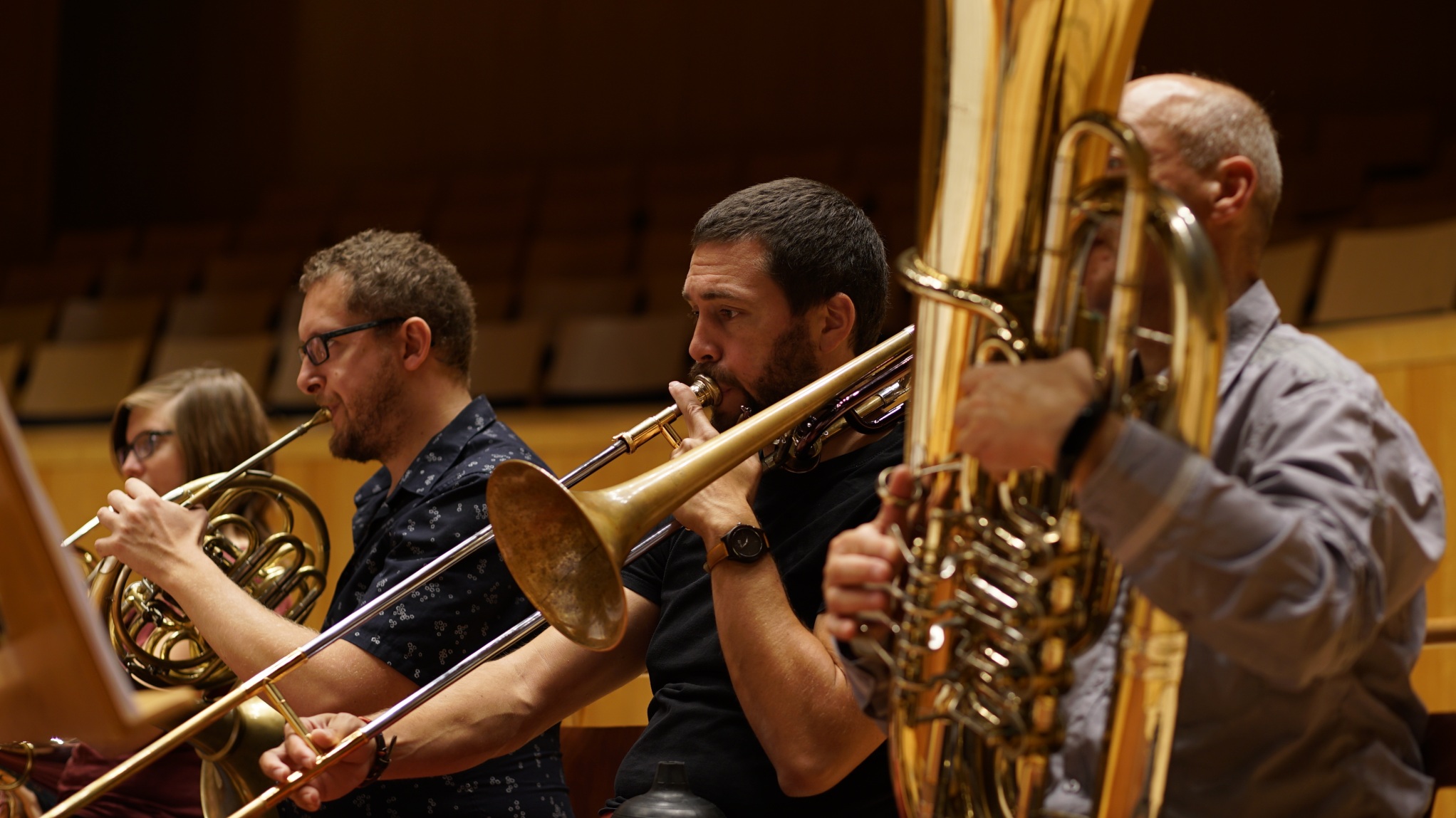
My own compositional approach to repetition and memory has involved working systematically with cyclical pitch materials, exploring the many ways in which these can be varied or looped into larger cycles. Pitches are methodically arranged into chains that feel linear but, being circular, avoid an immediate sense of resolution or goal-orientation. My aim, instead, has been to create musical textures that feel continuous and flowing. Think here of a river, or perhaps a waterfall; something that contains motion but isn’t working towards an endpoint, rather, it is in a constant state of renewal. These cycles tend to build from very simple foundations such as chromatic scales, or the kinds of symmetrical modes found in the music of Olivier Messiaen. These are orchestrated in different ways and divided into varying musical registers to avoid the cycles from sounding too straight-forwardly like ascending or descending scales. A one bar loop might be continually varied over several bars, which might then be looped back to an earlier bar to form longer loops. These longer looped sections might also repeat to form even larger cycles. Examples of these looping processes can be found in pieces such as Rise (2003), Surface Forms (repeating) (2009), MCE (2010), Vessels (2012/13), Receiving the Approaching Memory (2014), a form in search of itself (2016), Piano Quintet (2017), and First Light (2018). A particularly latticed approach to repetition can be found in the two pieces on this disc in which various layers of material containing repetitions of different lengths are juxtaposed on top of each other to create ever-varying musical textures.
The process of putting all these pieces together is at odds with the act of listening to them; the music is often constructed systematically and methodically and yet these processes are rarely discernible. Listeners report having been confused as to where they are in the piece, which is something I too have experienced when listening to these works in rehearsal for the first time. I enjoy the playful contradiction of spending months carefully and systematically putting a piece together, only to find myself disorientated minutes into listening to it. Ben Harper, in his blog, Boring like a drill, compared his experience of listening to my piece Vessels to being lost in a thicket:
Vessels messes with your sense of familiarity, the repetitions and recurring chord progressions pass by with the same reassuring presence that trees have in reminding you that you’re still lost in the forest. Have we been here before? Is the music moving somewhere else now, or is my mind playing tricks on me? I’m writing this from memory after hearing it again last night, and I’m starting to wonder whether I actually heard some of the things I want to describe now. If I play it again now I’ll be up all night.
Here, and in the other aforementioned works, Feldman’s ‘disorientation of memory’ comes into play. As Marcel Proust reminds us, “Remembrance of things past is not necessarily the remembrance of things as they were.” Something changes in the act of recollection; the remembered event becomes a new event, which, in turn, becomes part of an ongoing unfolding of perception and memory. This temporal unfolding—what Bergson might have referred to as a sense of ‘perpetual becoming’—is key to how I envisaged the two pieces on this disc. As I have written elsewhere (Harrison, 2013):
We find ourselves living both in and through time, constantly engaging with our faculties of memory protention and retention. Time can be seen as both the instant and the accumulation of instants that make up the ‘being-time’ that we experience.
Here protention, a term devised by Husserl, refers to those moments just ahead of us that have yet to occur and retention refers to those moments experienced and retained in the memory. Music theorist Jonathan Kramer has applied these ideas to music, making the crucial point that the present is not simply the place where perception happens but “it is also the meeting ground of memory and anticipation, both of which colour perception” (Kramer, 1988). Below, I have tried to expand on the ways in which these aesthetic ideas impact upon the two pieces on the disc:
repetitions in extended time was written for and is dedicated to the Ensemble Plus Minus. It was commissioned by the Huddersfield Contemporary Music Festival and first performed there by Ensemble Plus Minus on November 23rd, 2008, conducted by Mark Knoop. Having the opportunity to write a substantial work for musicians who I respect greatly and know as friends gave me the opportunity to explore ideas about repetition, memory, and cyclical structures with a renewed rigor. Furthermore, both the ensemble and festival were encouraging in giving me permission to write a longer work of 40 plus minutes. Paradoxically, the longer the work seemed to get, the less material I seemed to need. What I began to envisage was a piece of extended duration that would become more and more focused over time; almost like a lens that would become increasingly magnified as the piece progressed. The piece comprises five sections, each progressively and systematically slower than the last. As is evident from the second section onwards, each of the sections—or panels—is interrelated and utilises similar materials seen from different angles or perspectives. There is also a marked slowing of tempo from one section to the last and an increased number of repetitions until the final section, which shares many of the same features of the opening section but at half the speed.
In a book chapter entitled repetitions in extended time: recursive structures and musical temporality, (Harrison, 2013) I wrote of my experience of listening to a concert recording of the work some years after the premier. As the comments I made still apply to the way I experience the piece now, I reproduce them in full here:
As I listen, three distinct layers skirt around each other: streams of constant demisemiquavers in the piano part are pitted against the rhythmic irregularity of the bass clarinet and electric guitar, and freer, oscillating glissandos in the string parts. Against these layers can be felt the pulsating regularity of dense chords played by two electric keyboards. Because each panel consists of groupings of instrumental parts that are given their own number of repetitions, what I hear is a latticed textural surface of interlacing loops and circles. The surface, as I listen, appears multi-perspectival, each layer timbrally and rhythmically distinct enough for us to shift our gaze. As the piece moves into the next panel, the texture now transforms into a rhythmic interplay between the clarinet, electric guitar and strings. I become aware of slight alterations in rhythmic placement, crossings and shifting patterns. The rhythmic consistency of the endless streams of demisemiquavers in the piano part can now be perceived as a grid of sorts, an anchor point that helps to highlight the persistent irregularity of the rhythms in the clarinet, electric guitar and string parts. As the piece progresses I become gradually aware of a reduction in tempo and a spatial dimension emerges. One does not relax but is, perhaps, allowed to ease into the music, the motion becoming more bodily (perhaps akin to breathing). The repetitions increase but I have had time to adjust, to become more immersed in the fabric of the music. Over time the piece becomes more singular, slower and more obsessively repetitious. As I listen to the final panel, the music feels as if it is taking place in slow motion, suspended in time, no longer fleeting. repetitions in extended time, as I see it, is very much about taking the listener to the heart of a sound, magnifying events – creating the embodiment of a living, breathing experiential time. In other words, it requires time to in order to become embodied by time itself.
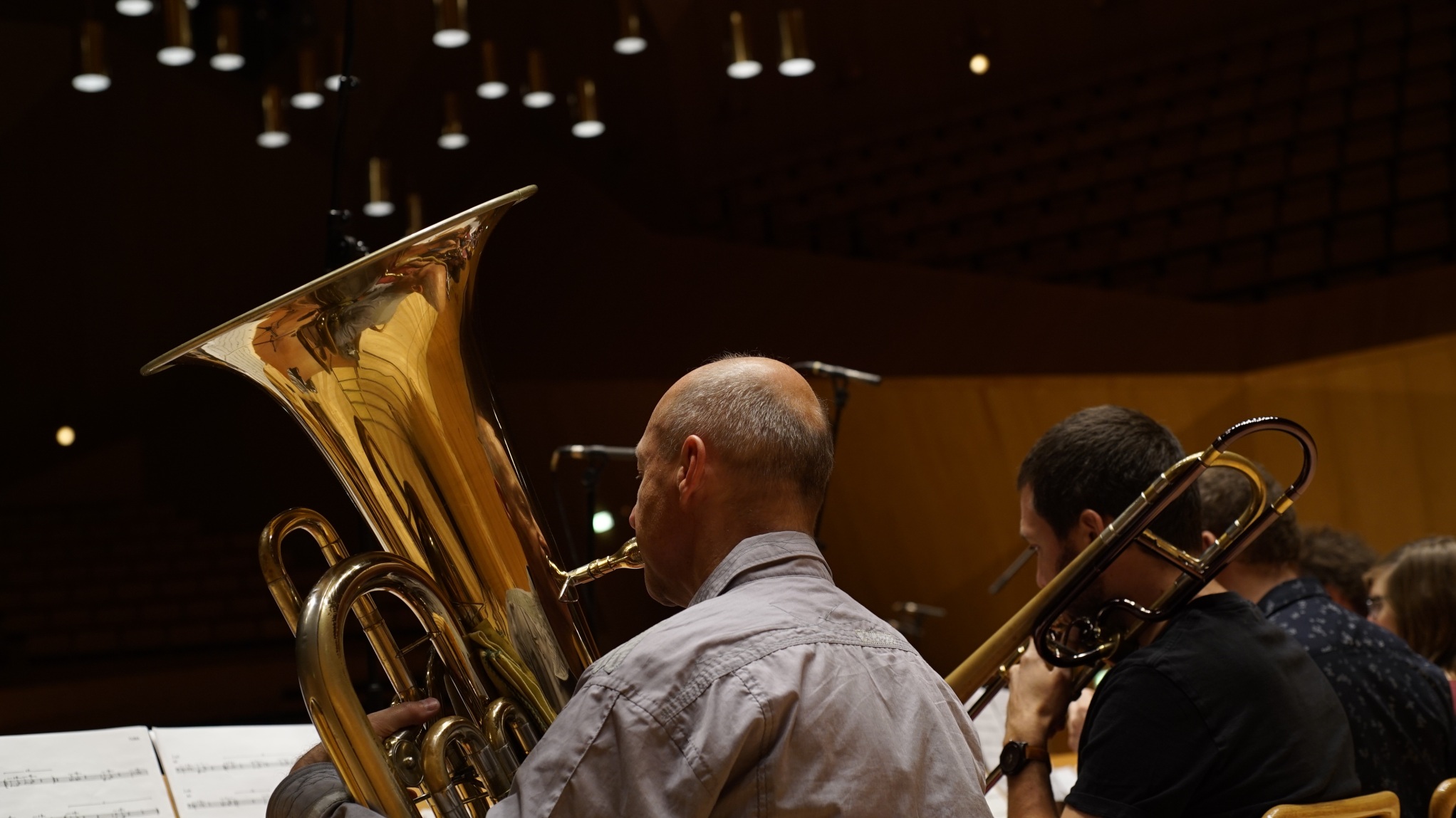
This sense of “taking the listener to the heart of a sound” is also very much the premise for How Things Come Together (2019), which was commissioned by Ensemble Contrechamps for the full 23-piece ensemble with funds provided by the Ernst von Siemens Foundation. The piece was first performed by Ensemble Contrechamps, conducted by Vimbayi Kazibon on 24th September 2019 at Studio Ernest-Ansermet, Geneva, Switzerland. The piece can be seen as both a development and a simplification of the ideas explored in repetitions in extended time. Here, material that is derived from cycles is fragmented and presented as a series of block chords that are continually rearranged in the woodwind, brass, electric guitar, harp, piano and percussion parts, until any sense of sequential ordering is removed. These are juxtaposed against the more linearly generated material in the strings and keyboard, producing a sense of opposition between that which flows and that which remains in stasis. At selected moments, the woodwind, brass, electric guitar, harp, piano and percussion drop away to reveal the more projected motion in the strings. These changing perspectives continue until the end of the work, whilst the number of repetitions gradually increases. This process comes to fruition in the final bar of the piece, which is repeated 37 times and extends to a duration of nearly two and a half minutes.
As I have written of this piece in preparation for a forthcoming book chapter (Harrison 2020):
Such high levels of repetition might appear extreme, perhaps even unmanageable, for the listener if such a moment took place at the start of the work. However, it is through a process of entrainment that the listener may find themselves apprehending material in radically different ways. By the end of the work, I find that my listening has changed and I am in a position to more readily apprehend the nuances of difference between one repetition and the next.
I like to think of this approach to form, in which the intensity of repetition becomes higher and higher as the tempo becomes slower and slower, as being rather like a spiral that moves simultaneously both toward and away from its own centre. On the one hand, as the repetitions get longer, duration expands outwards. On the other, the focus seems to be ever more on moving inwards to the heart of the material. It is at the point in these compositions where the number of repetitions is highest that the listener may perhaps feel more entrained than estranged, more orientated than disorientated. It is my hope that, through the process of memory rehearsal, the listener eventually becomes immersed within the very fabric of the music.
I cannot, of course, predict with any certainty how a listener will perceive these works. However, I like to imagine that these pieces offer the kind of journey that allows for multi-perspectival viewpoints along the way. By the end, the listener may have journeyed quite a long way without having travelled very far at all—ultimately, not to a point of arrival, but into a state in which they are able to embrace time becoming.
Bryn Harrison, September 2020
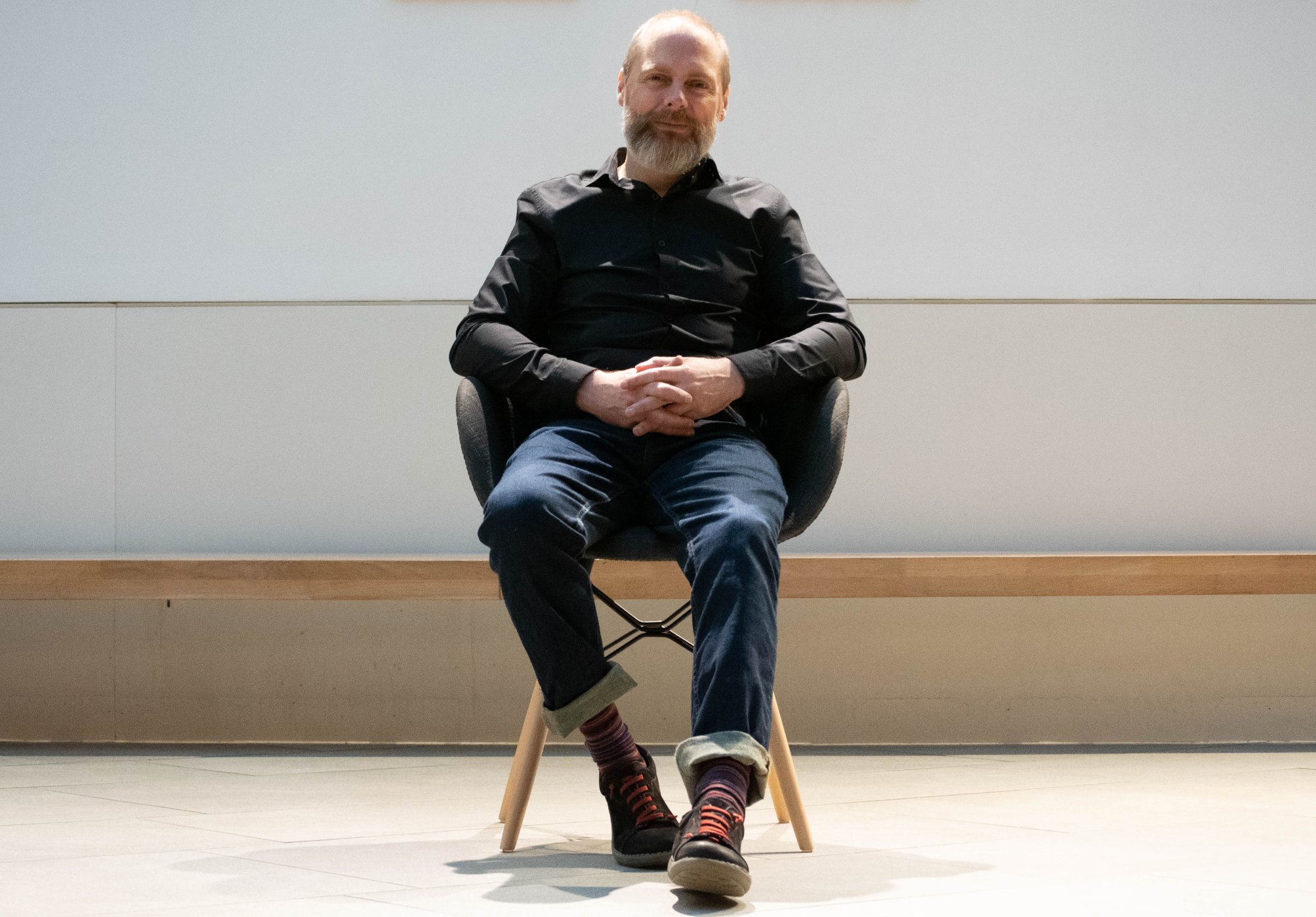
Bryn Harrison © Lili Autumn
CREDITS
Recorded at
Auditorio de Zaragoza, Spain
September and December 2019
Composed by
Bryn Harrison
Performed by
Plus-Minus Ensemble
Vicky Wright, clarinet | Tom Pauwels, guitar | Roderick Chadwick, piano | Aisha Orazbayeva, violin | Séverine Ballon, cello | Mark Knoop, conductor and keyboards
Ensemble Contrechamps
Susanne Peters, flute | Béatrice Laplante, oboe | Laurent Bruttin, clarinet | Katrin Herda, bassoon | Kevin Juillet, saxophone | Charles Pierron, horn 1 | Stagiaire HEM, horn 2 | Julien Würtz, trumpet | Vincent Bourgeois, trombone | Serge Bonvalot, tuba | Anne Bassand, harp | Simon Aeschimann, guitar | Stefan Wirth, piano 1 | Antoine Françoise, piano 2 | Thierry Debons, percussion 1 | Sébastien Cordier, percussion 2 | Maximilian Haft, violin 1 | Rada Hadjikostova, violin 2 | Hans Egidi, viola 1 | Noémie Bialobroda, viola 2 | Lucy Railton, cello | Noëlle Reymond, double bass 1 | Jonathan Haskell, double bass 2 | Florian Guex, executive producer | Serge Vuille, artistic director | Vimbayi Kaziboni, conductor
Music Production and Sound
N Music Production · Santi Barguñó, Hugo Romano Guimarães
Liner notes
Bryn Harrison
Graphic Art Direction
Lorena Alonso. Estudio Gerundio
Video and photos
Cordelia Alegre
Mixed and mastered with
Dynaudio speakers
Produced by
Santi Barguñó
Contrechamps is supported by the City of Geneva.
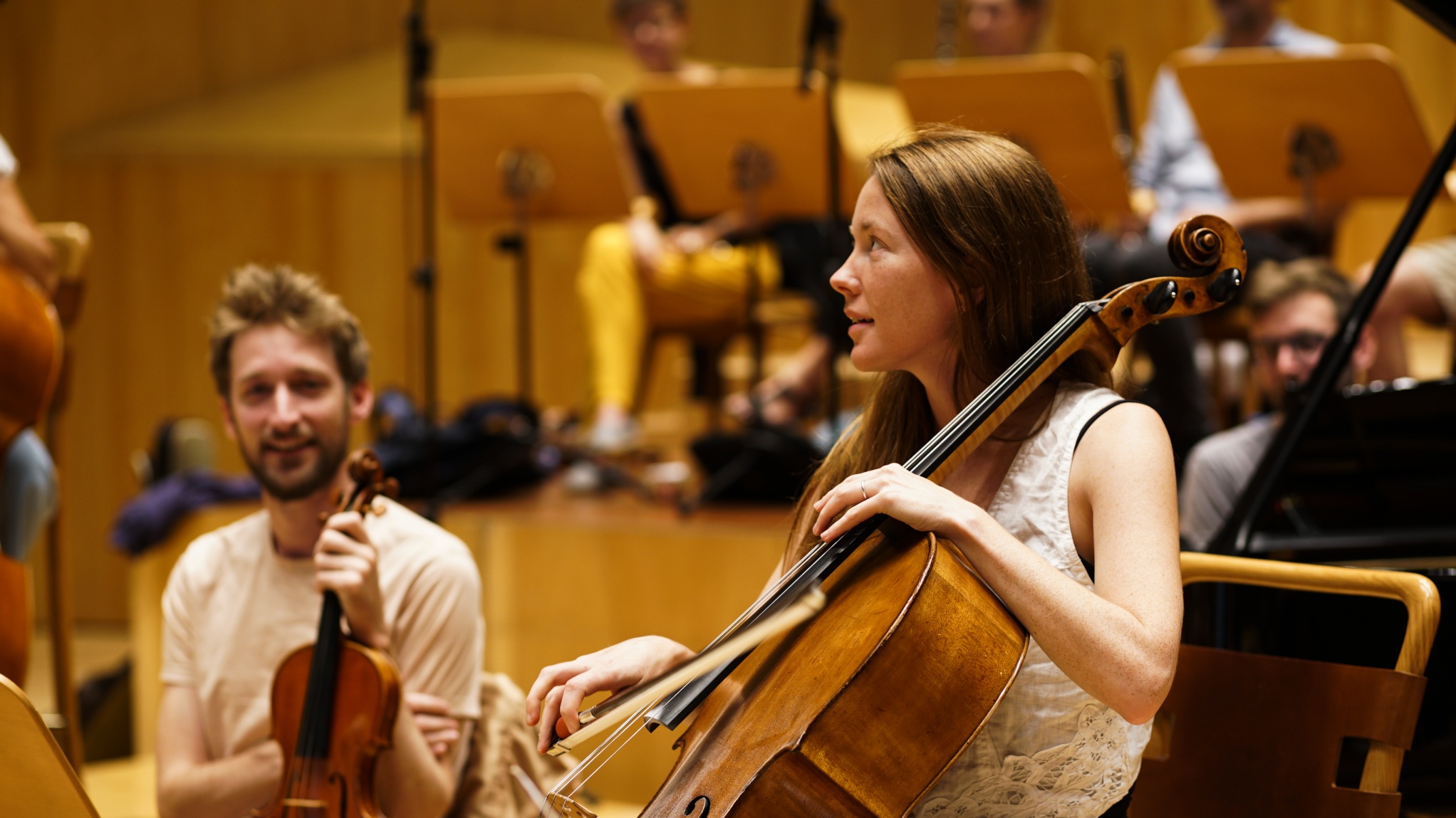
“Si vous aimez les musiques sans fin qui tournent sur elles-mêmes, des musiques qui s’installent dans un climat planant ou dans une énergie enivrante, je vous propose de découvrir l’oeuvre du compositeur Bryn Harrison (…). Le disque qui paraît aujourd’hui c’est une belle carte de ses œuvres récentes, c’est fascinant… un beau disc et un bel objet aussi.” Listen here
FRANCE MUSIQUE, Rodolphe Bruneau-Boulmier
“The repetitions and the developments blur one into the other, both offering fascinating worlds of experience”
TEMPO, Neil T. Smith
“[repetitions in extended time] it’s a piece that so successfully immerses us in its unique, clearly-defined world that it seems to take a while to fully leave it.” Read here
5AGAINST4, Simon Cummings
“La escucha atenta de las dos partituras aquí albergadas provoca una sensación alucinógena en el auditor; el material, cuyo punto de partida instrumental resulta incluso tradicional, se torna en la audición como un artefacto nunca oído, nuevo. (…) Harrison juega con nuestra memoria, el conjunto instrumental insiste compulsivamente en volver sobre la misma idea una y otra vez. Una y otra vez. ¿Qué música escuchar después de ser sacudidos de esta manera?” Read here
EL COMPOSITOR HABLA, Ismael G. Cabral
“Les deux œuvres de Bryn Harrison interprétées sur ce disque s’articulent comme un véritable essai musical sur la mémoire et la perception. (…) Cette musique extrême se révèle d’une richesse infinie malgré l’économie drastique de son matériau de base.” Read here
HÉMI SPHÈRE SON, Guillaume Kosmicki
“Les deux ensembles de renommée internationale Plus-Minus et Contrechamps excellent dans ces partitions qui mettent au défi l’interprète, servis par un enregistrement en son surround réalisé dans l’acoustique remarquable de l’auditorium de Saragosse.” Read here
RESMUSICA, Michèle Tosi
“Time becoming crea una atmosfera constantment canviant, una vaguetat sonora que interromp la finitud sonora. És una música que, més enllà de ser escoltada, reclama ser viscuda intensament.” Read here
